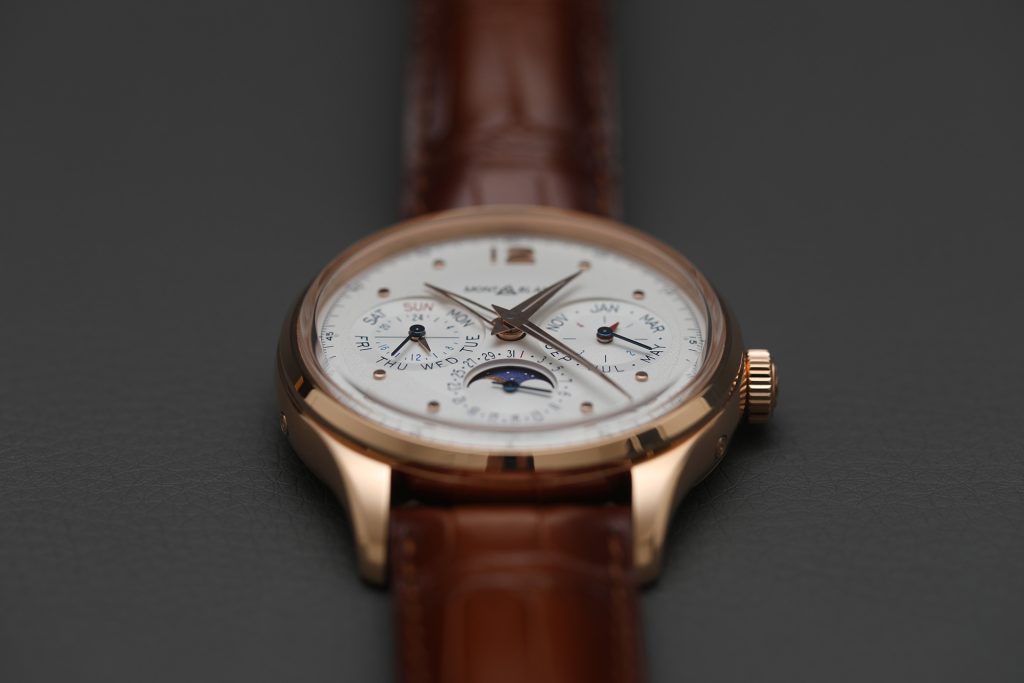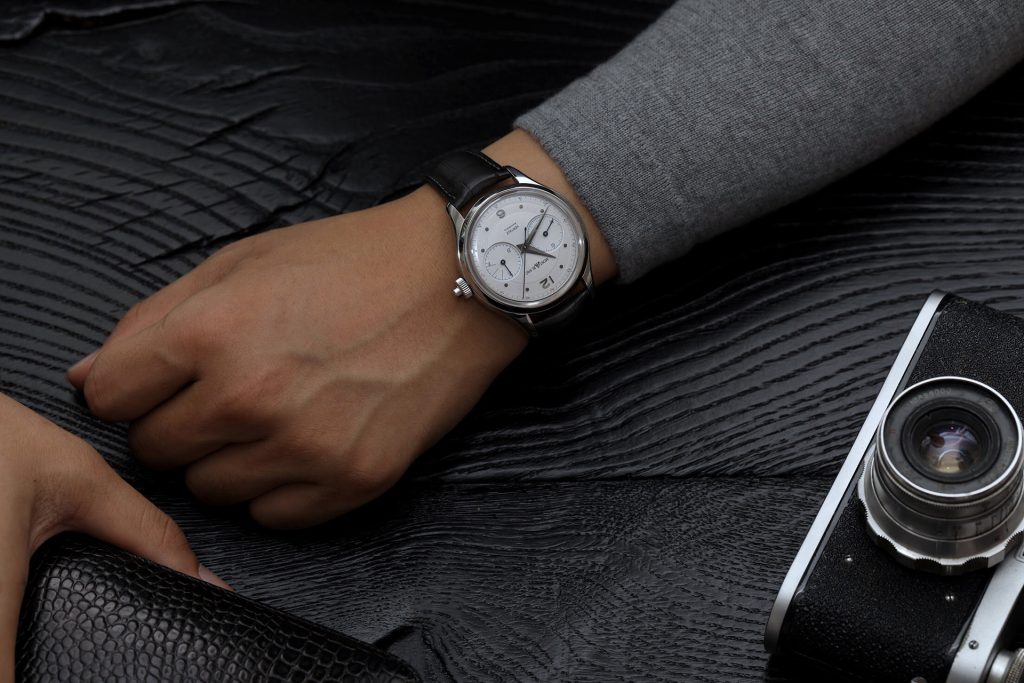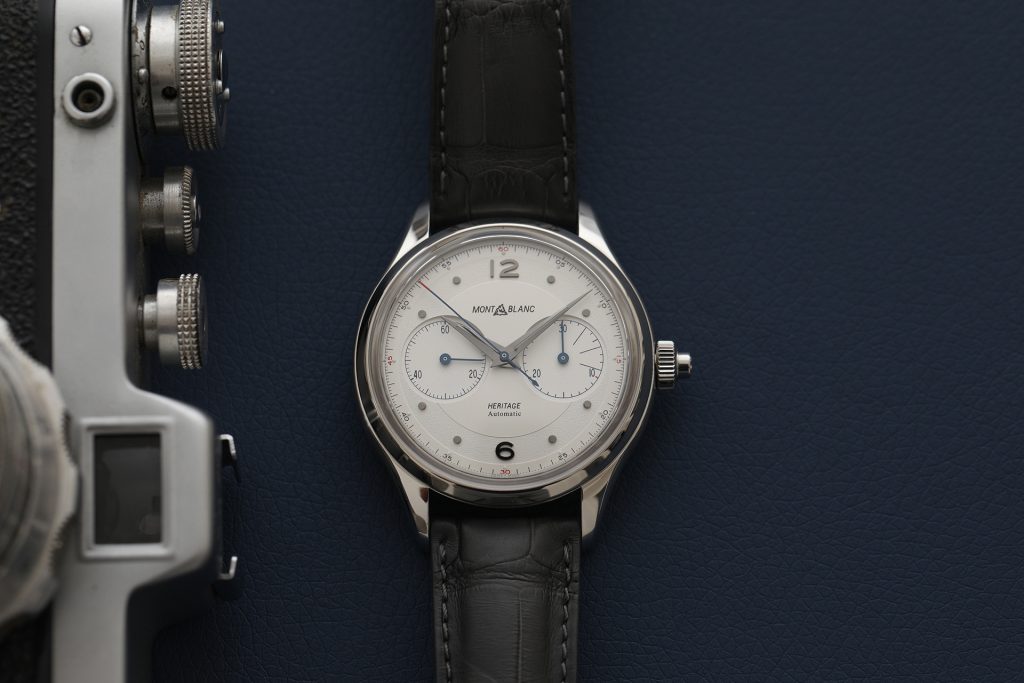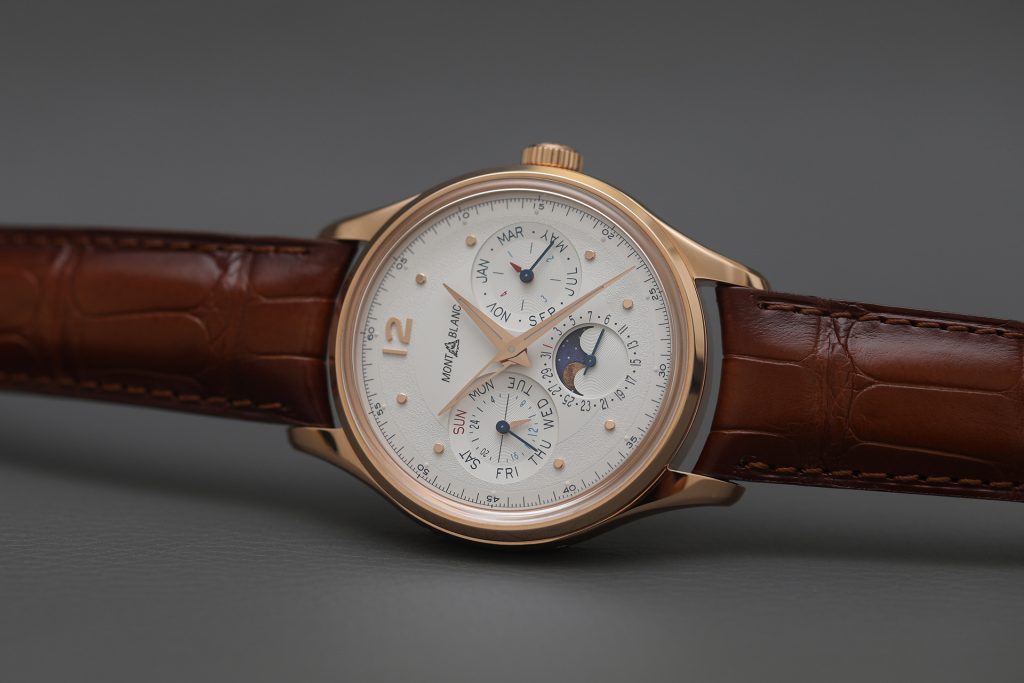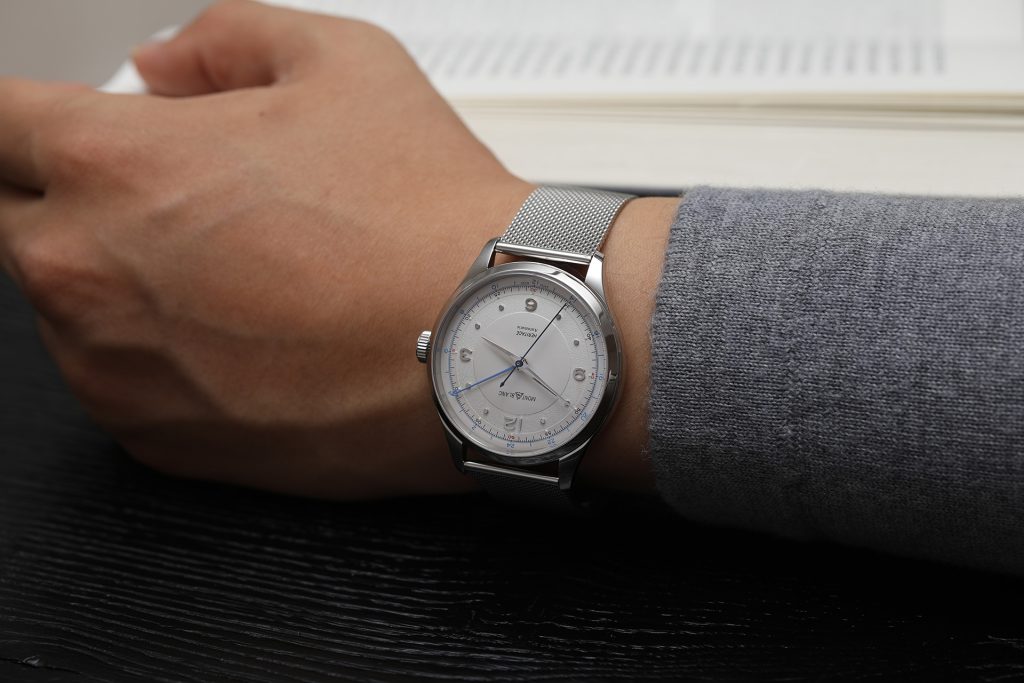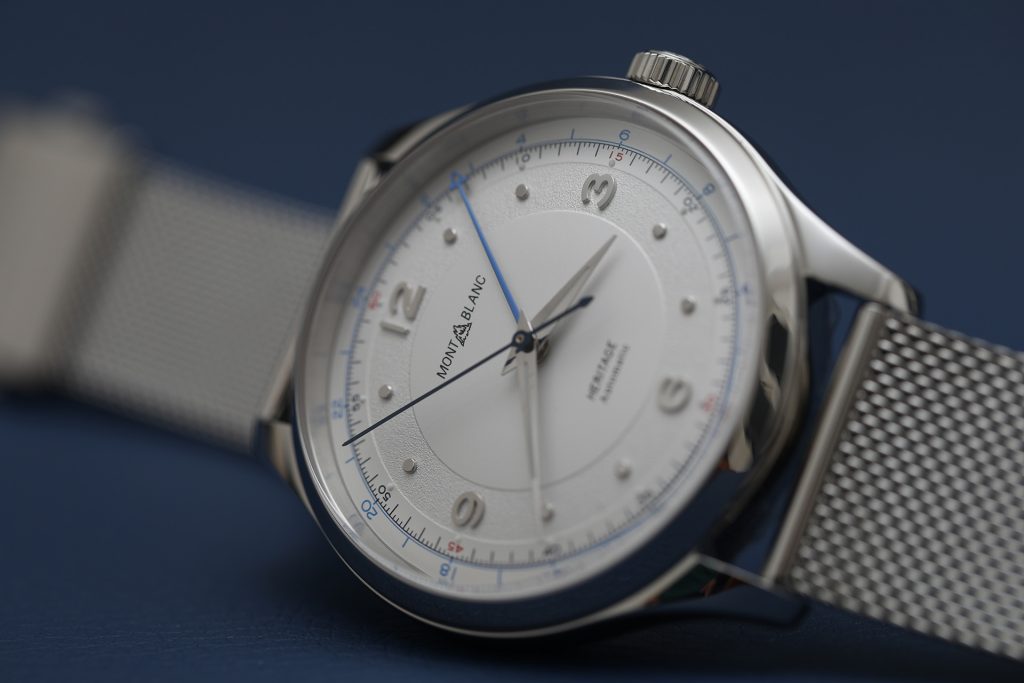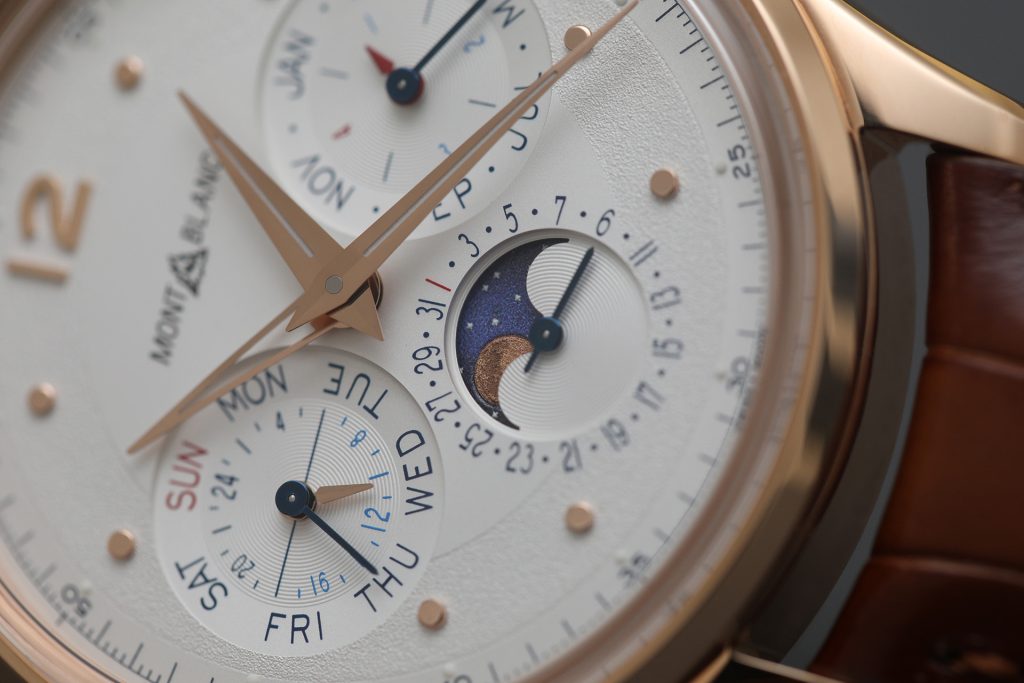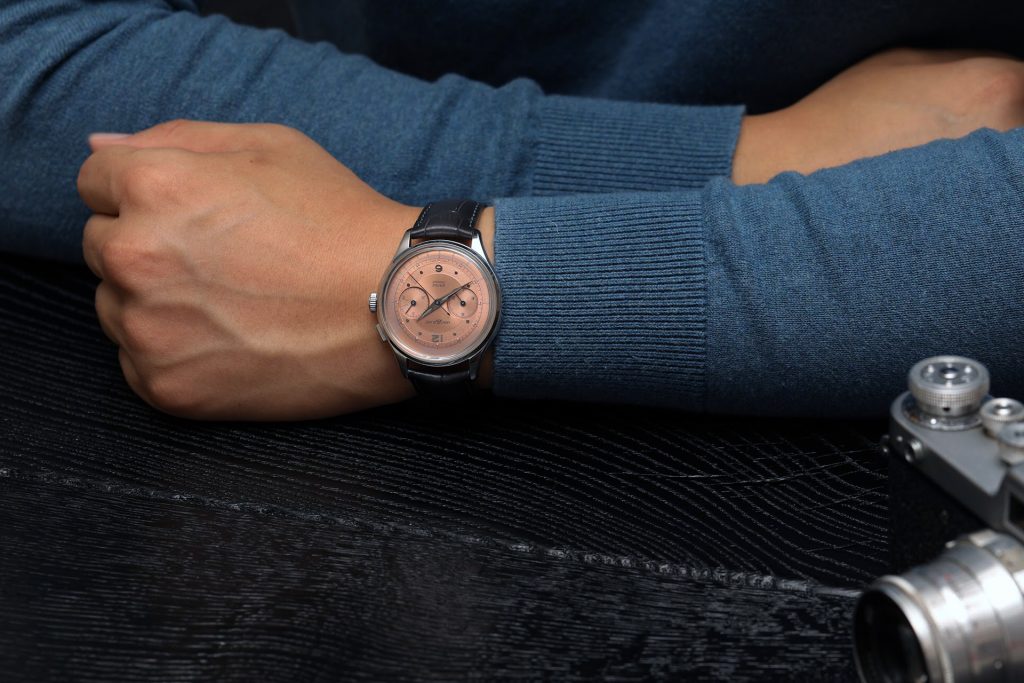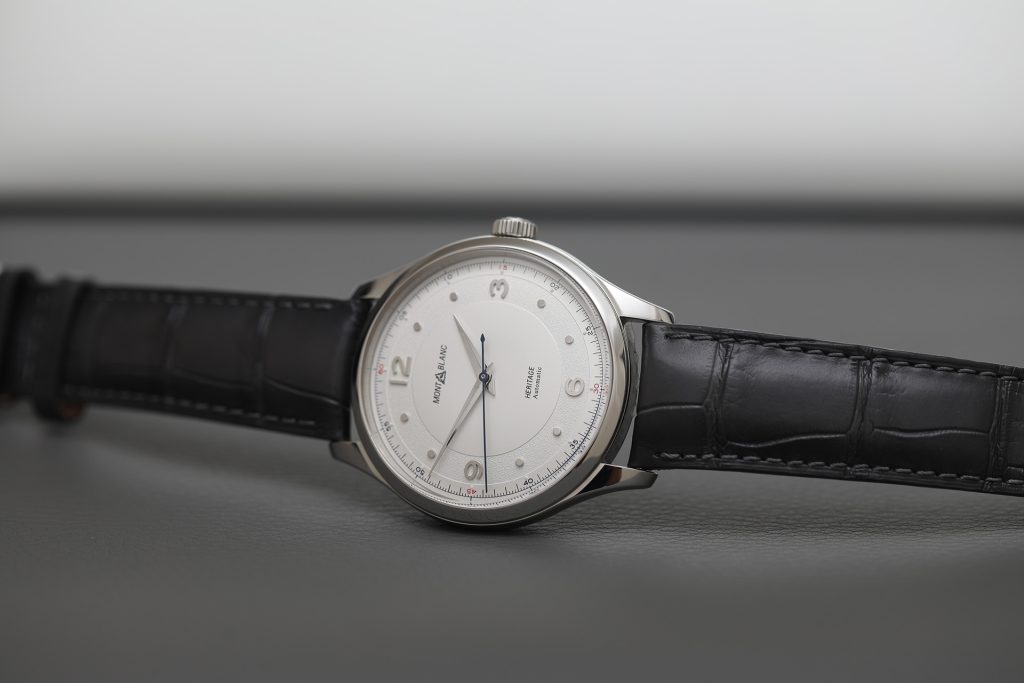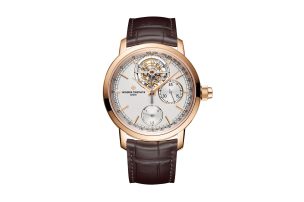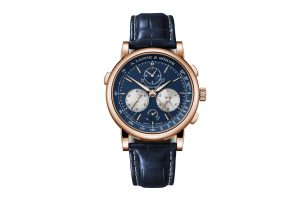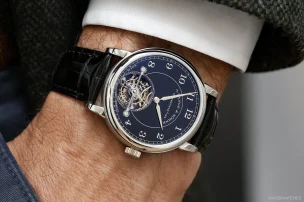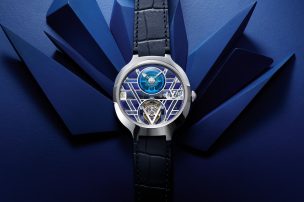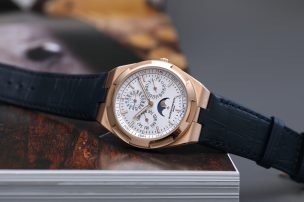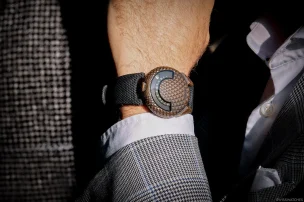
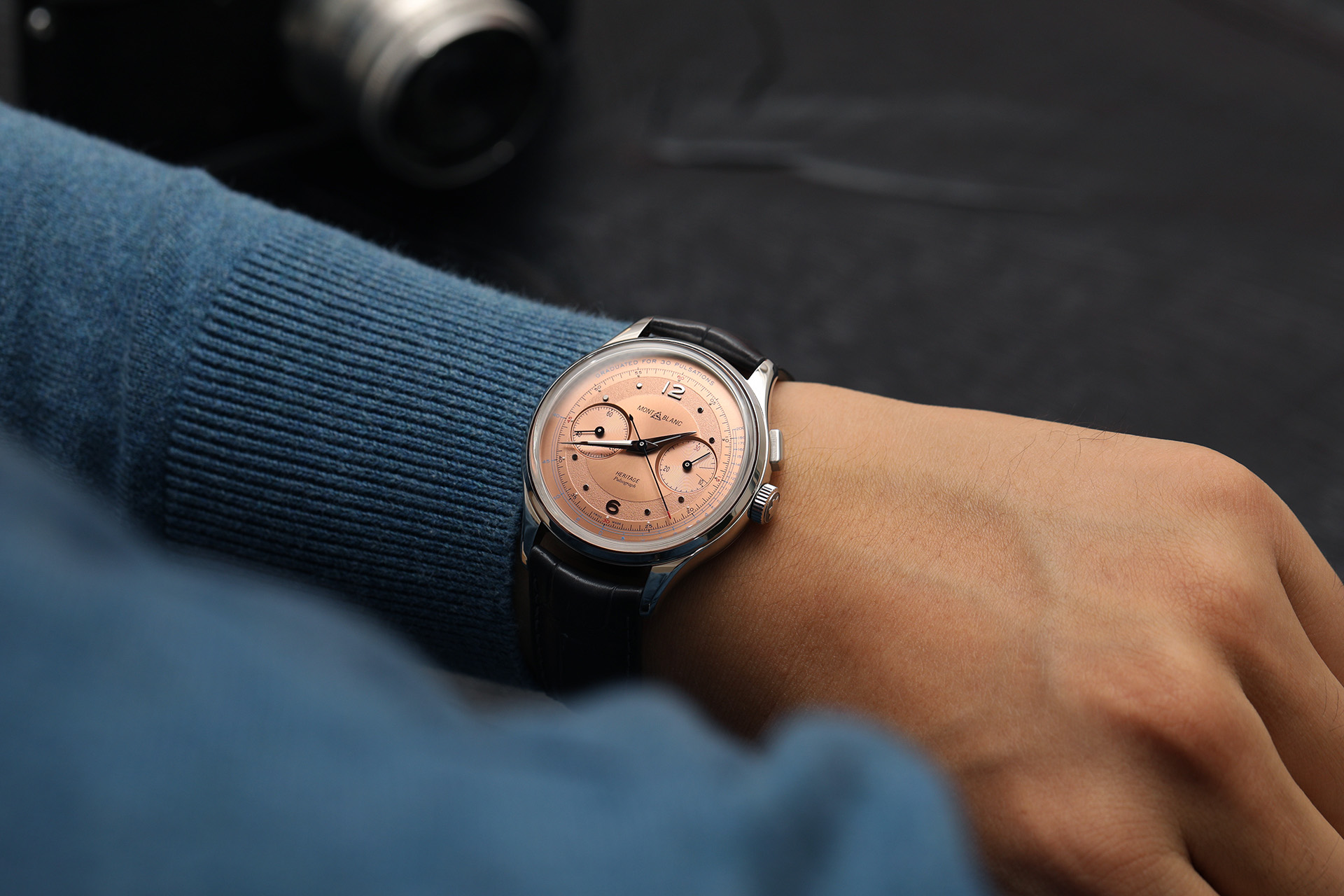
Montblanc Heritage Collection – A love affair between vintage and contemporary
Davide Cerrato, Managing Director of the Montblanc Watch Division, has once again gone on a treasure hunt. He is one of just a few who have access to the holy halls of Minerva, the archive in Villeret, searching like an archaeologist for treasures from the 160-year-old brand that was acquired by Montblanc in 2007. In 2018, for the Maison’s 160th anniversary – which established its reputation thanks to precise chronographs at the beginning of the 20th century – Monsieur Cerrato has already presented a remarkable conglomerate of historical legacies from his treasure chest, the archive of Minerva.
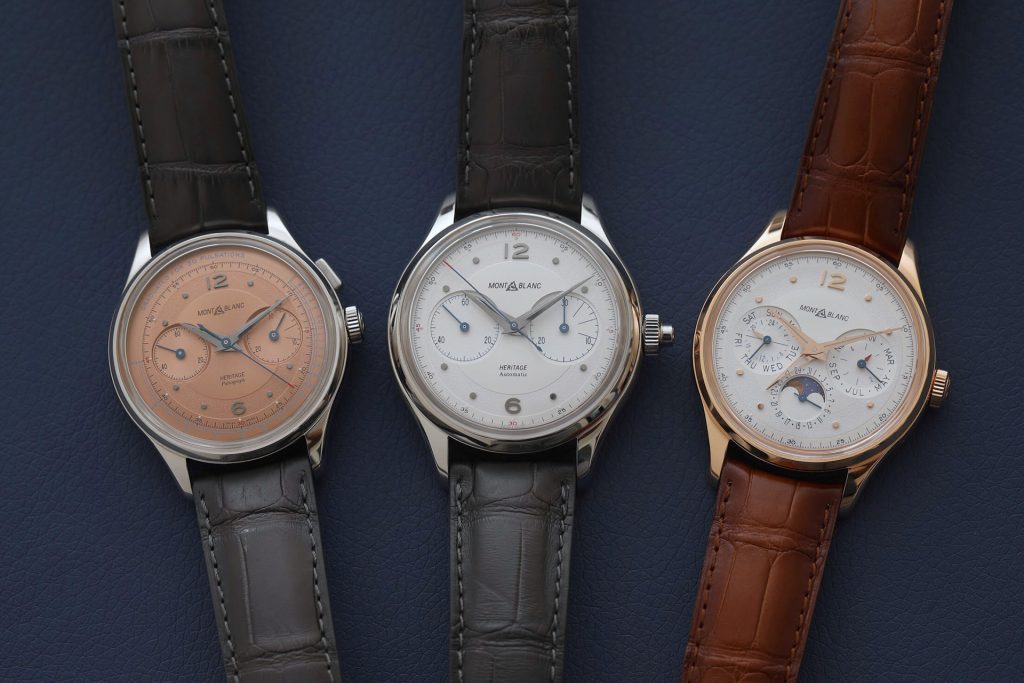
Vintage charm in the style of the 1940s and 1950s
The celebration continues, and earlier this year Montblanc presented the new Heritage collection, which is now available in stores. The modern shaped Dress Watches coquet with the elegance of the 1940s and 1950s, where colour pallets like salmon, smoked caramel and silvery-white where highly fashionable. We are introducing five of our highlights from this vintage-style collection.
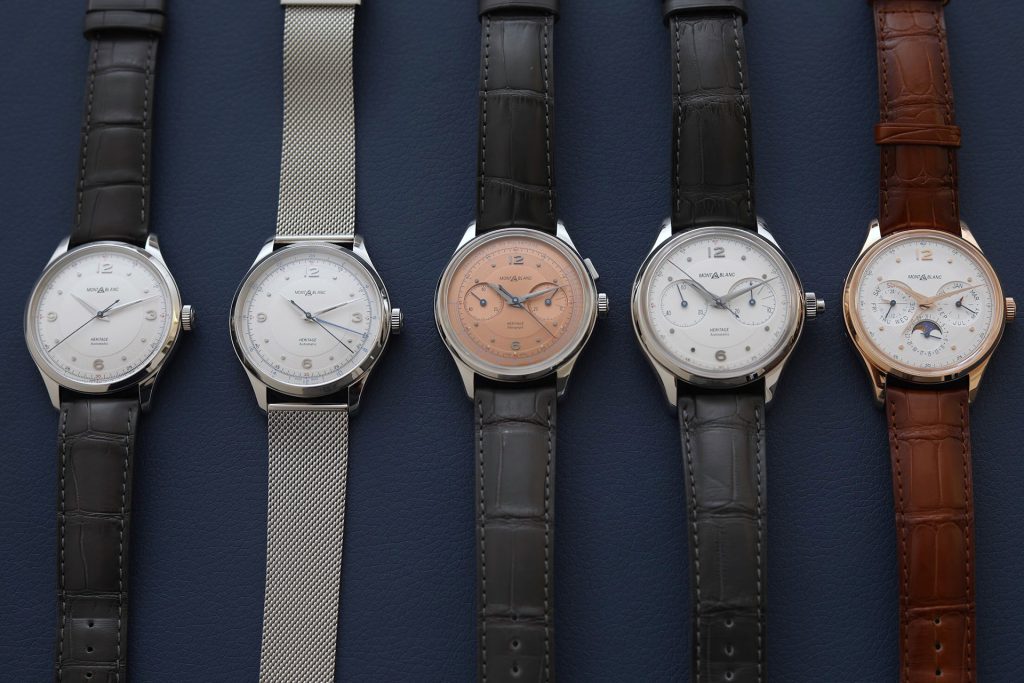
Our highlights of the new Montblanc Heritage collection
Heritage Pulsograph Limited Edition 100
One highlight from the collection is the new Heritage Pulsograph Limited Edition 100 in a 40 mm stainless-steel case. The design of the ‘doctor’s watch’, which mechanically calculates the human heart rate, has been inspired by the Minerva chronographs of the 1920s. At that time, they were highly valued for their precise calibre 13.20. In 2013, Montblanc introduced a Pulsograph and modified and extended the calibre 13.20 by a one-pusher-system (MB M 13.21).
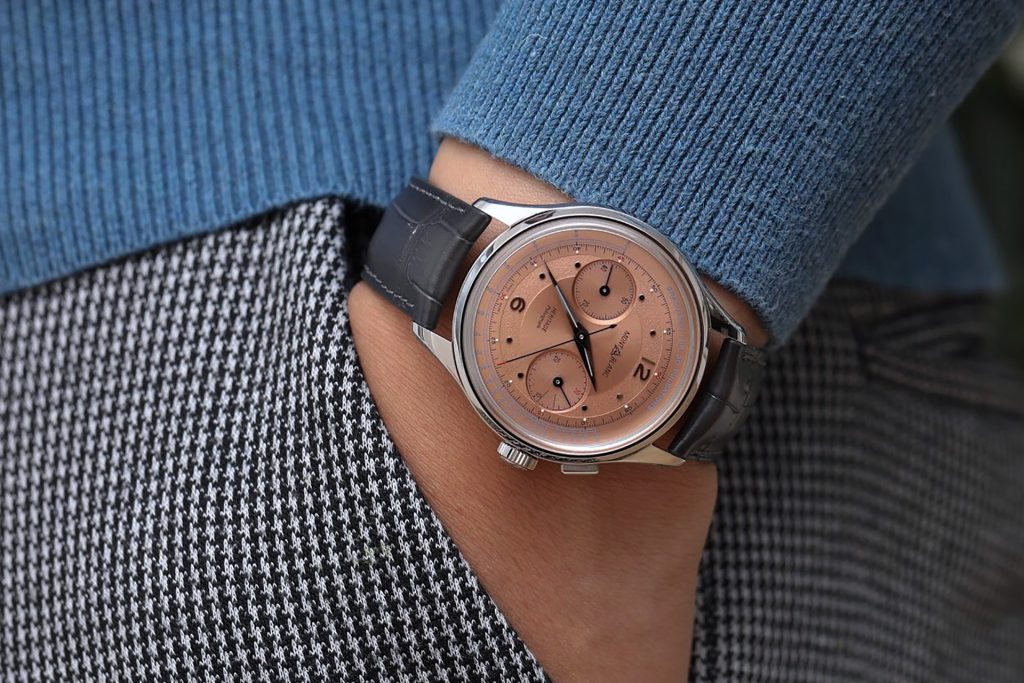
Montblanc Heritage Pulsograph Limited Edition 100
Although the movement of the new Pulsograph has not changed from the 2013 version, the watch has decisively improved in design. The predecessor model lacked a small degree of aesthetic subtlety, elegance and refinement. Furthermore, some vintage features were missing, like the dot-shaped indexes or the Arabic numerals at 12 and 6 o’clock; instead, they had Roman numerals and sharp indexes.

Montblanc Heritage Pulsograph Limited Edition 100
At the same time, the domed salmon dial with grained hour disc and sun-brushed finish on the new Pulsograph is eye-catching. The anthracite hour and minute hands featuring the Dauphine shape are curved to match the domed dial. They pay tribute to the vintage models – just like the sapphire box-shaped glass.
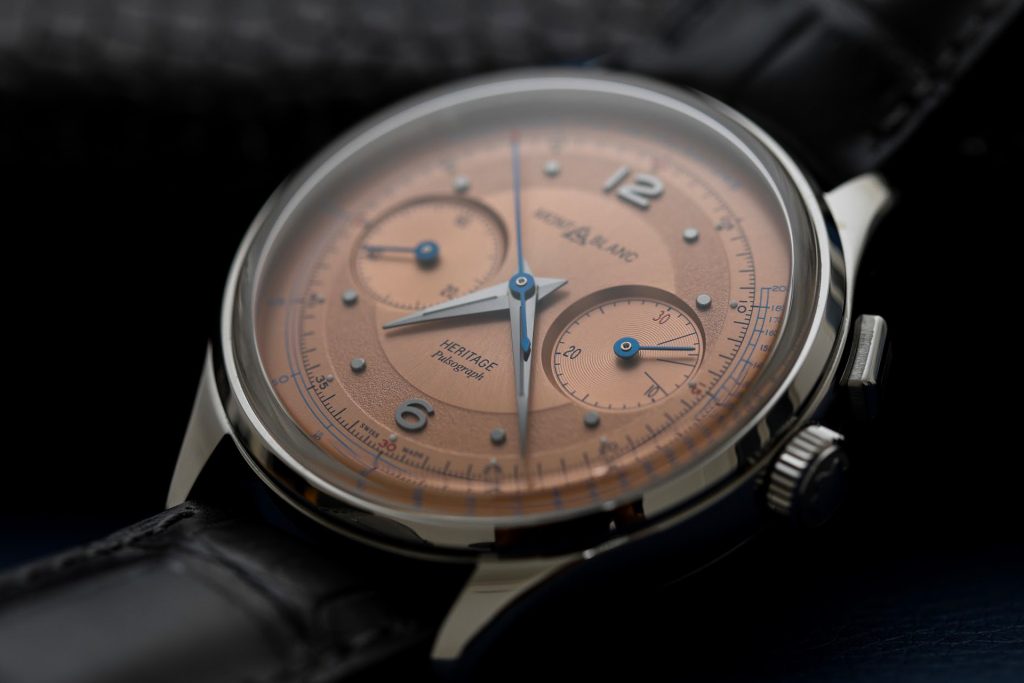
The sapphire box-shaped glass pays tribute to Minerva’s vintage watches
The blue second and 30-minute chronograph hands are less colourful than in the past model and harmonise much better with the overall execution of the dial. The bright blue heart rate scale circling the dial has a cool and modern contrasting touch. From the open case back, you get a very nice view of the beautifully decorated manual winding calibre MB M13.21. The bridges are made of rhodium-plated German silver with Côtes de Genève and hand-chamfered edges.
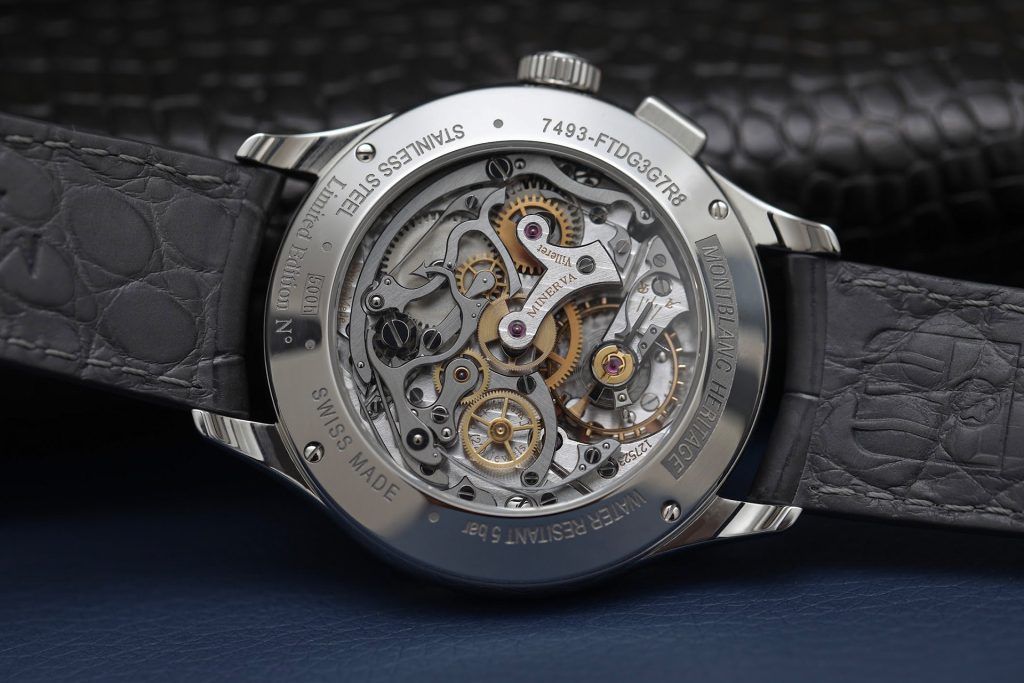
Manual winding calibre MB M13.21
Heritage Monopusher Chronograph
A monopusher chronograph expands the Heritage collection, being another homage to the precise chronographs of Minerva. Minerva already produced one-pusher watches (calibre 17.29) quite some time ago. The crown is used to start, stop and reset the chronograph.
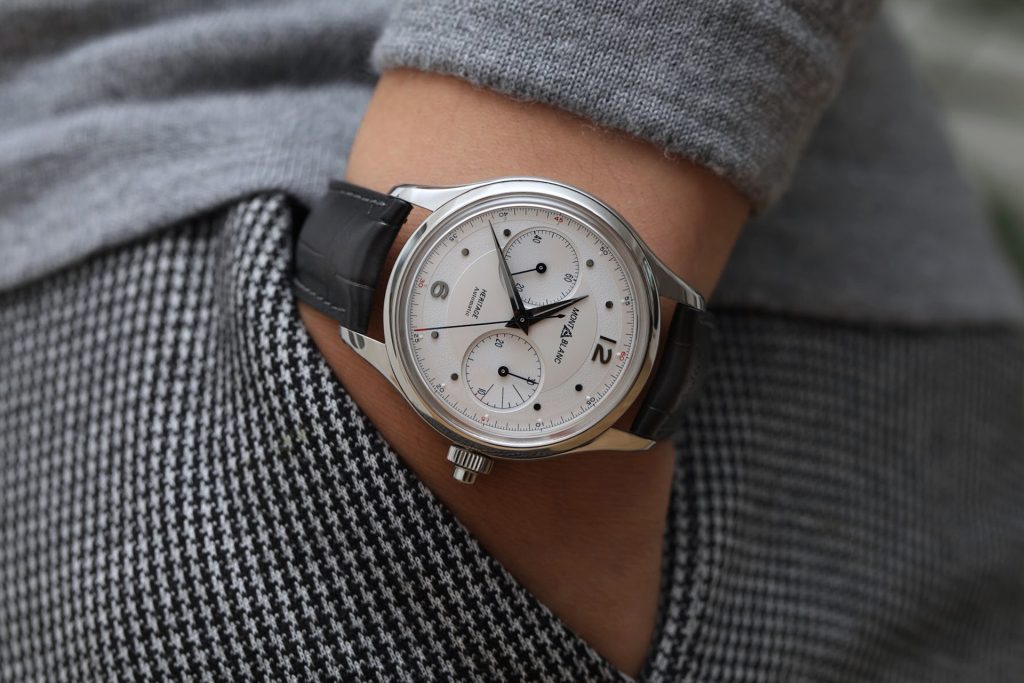
Montblanc Heritage Monopusher Chronograph
Inside the new Heritage Monopusher Chronograph runs the calibre MB 25.12, which is an automatic chronograph-calibre SW 510 from Sellita. As Sellita movements are technical and pricewise just as good as ETA, Montblanc truly offers a great price for a monopusher, at 4,700 euros. Most of the original vintage elements have been taken into account: the domed silver-white dial with two different finishings and the dot-shaped indexes, as well as the two subdials of the small seconds (at 9 o’clock) and the 30-minute counter (at 3 o’clock).
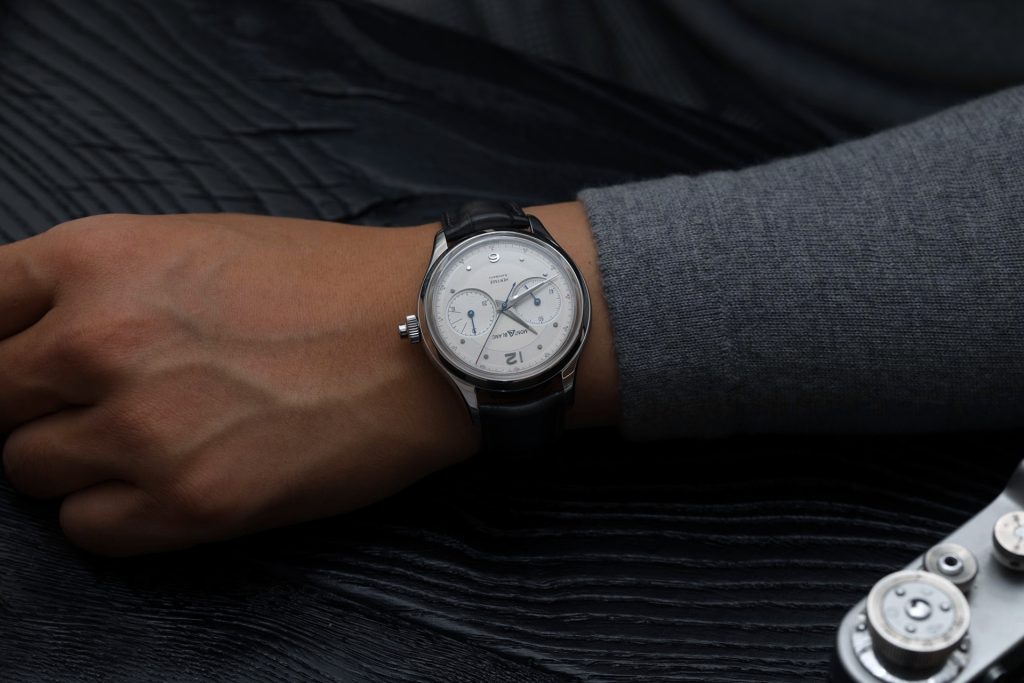
Montblanc Heritage Monopusher Chronograph
Looking closely, you will spot a scale with elongated markers in three-minute intervals: at 3, 6 and 9 o’clock. In the past, you had to top up the payphone every three minutes. This subtle feature can also be seen on the Pulsograph.
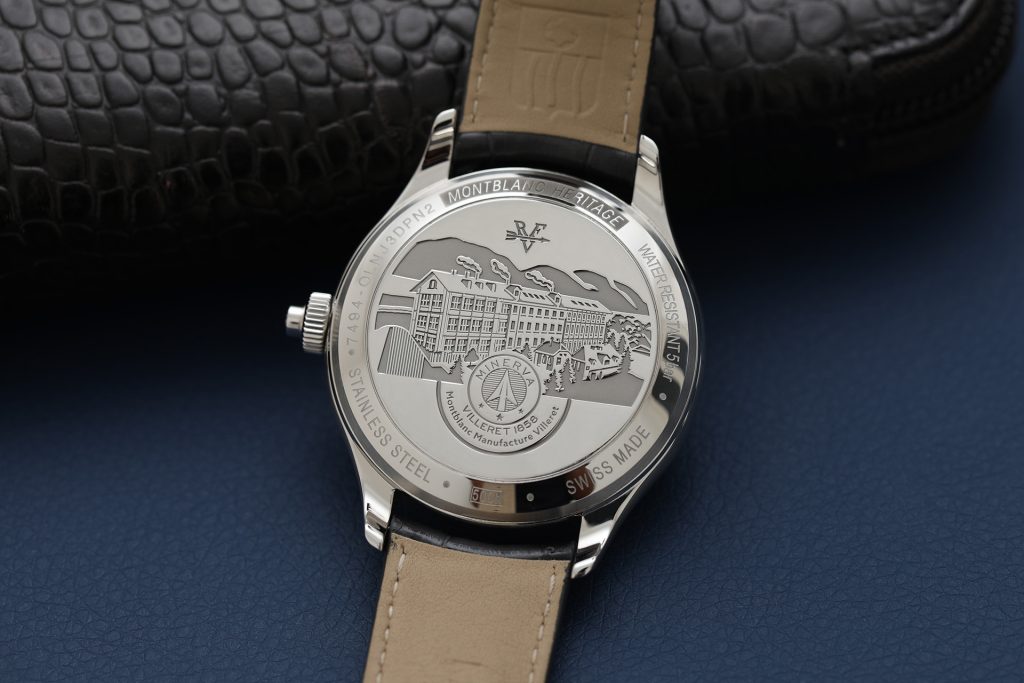
The Minerva manufacture in Villeret is engraved
on the case back of the new Monopusher Chronograph
Heritage Perpetual Calendar
In 2014, Montblanc ventured on making a perpetual calendar, the Meisterstück Heritage Perpetual Calendar. Since then, it has undergone an enormous improvement. Montblanc has updated the movement of the new Heritage Perpetual Calendar Limited Edition 100 to present an all-new, in-house calibre MB 29.22. It no longer runs with levers; instead, it has wheels which enable the wearer to adjust the watch from the crown bidirectionally.
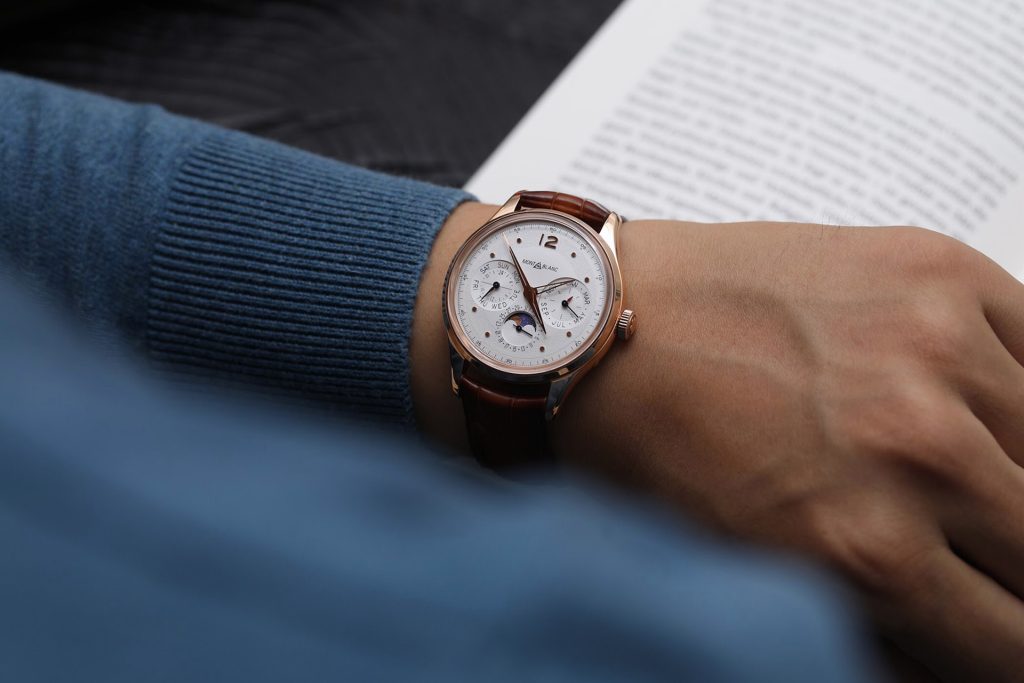
Montblanc Heritage Perpetual Calendar Limited Edition 100
An integrated safety device prevents the wearer from setting the watch between 8 p.m. and midnight to avoid the movement from being damaged. In this period, the movement starts to switch the function to the next day. Normally, the switchover begins at around 10 p.m. at the earliest, but Montblanc prefers to take extra high safety precautions.
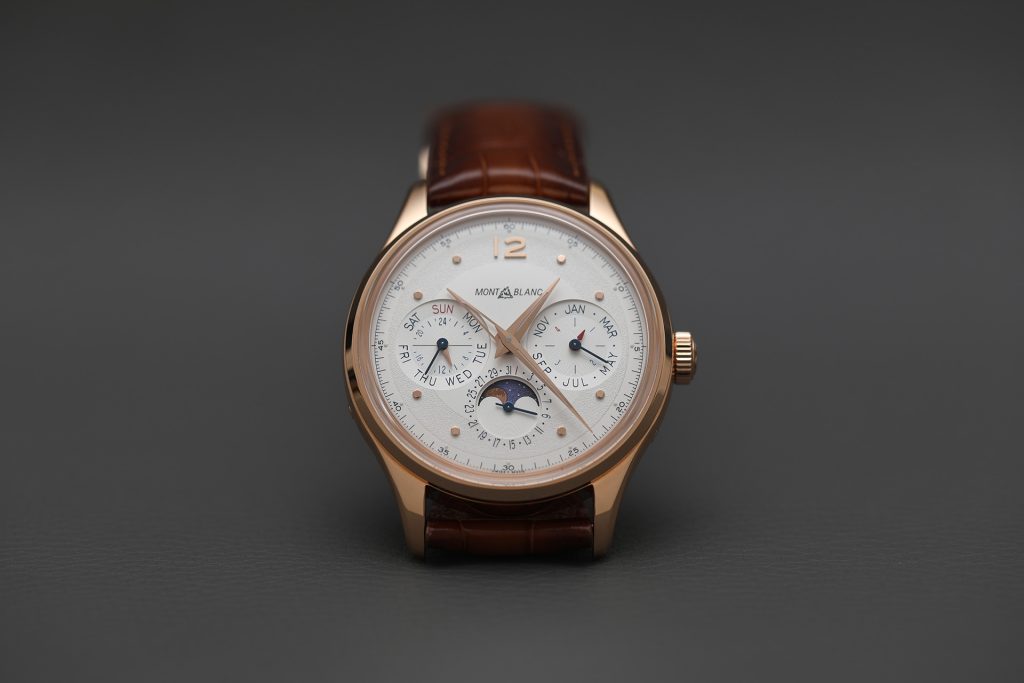
The Heritage Perpetual Calendar in red gold is limited to 100 pieces
In addition, the design has improved significantly. The watch has smooth shapes, a busy but well-balanced dial and bold colours, yet is not too bulky. The 40 mm case has a comfortable height of 12.3 mm, despite a domed sapphire glass in a box design. In addition to the calendar function, the watch also offers a second time zone that is displayed by a skeletonised hour hand from the centre axis. Just like in 2014, Montblanc again offers their next Perpetual Calendar generation at a great price. The limited red gold version costs 25,000 euros and the non-limited stainless-steel version costs 15,000 euros.
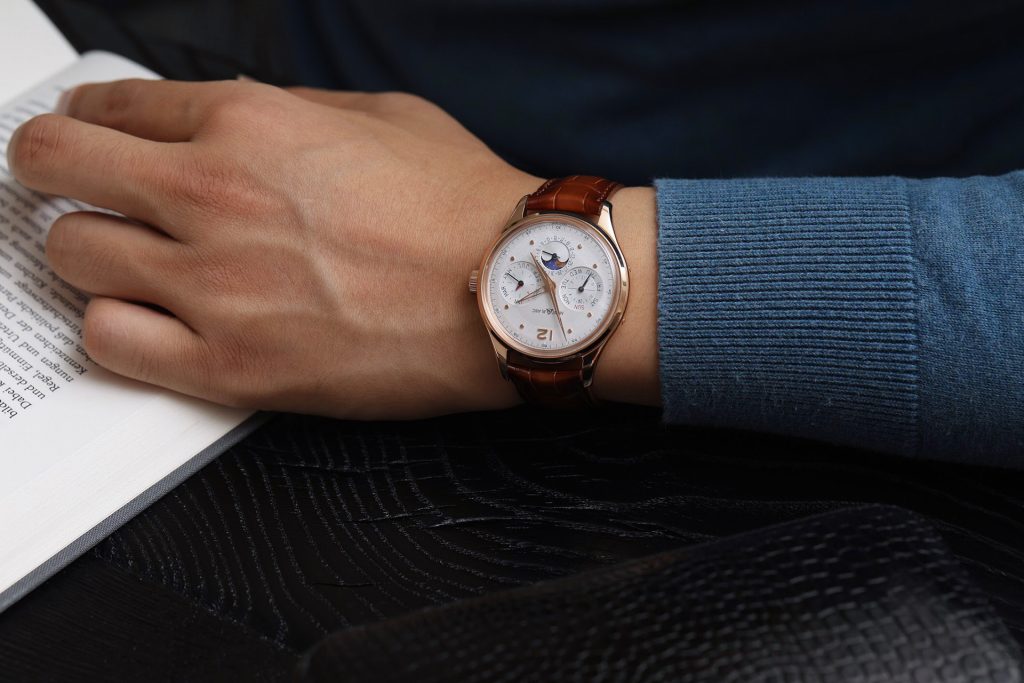
Montblanc Heritage Perpetual Calendar Limited Edition 100
Heritage GMT + Automatic
If you prefer it simpler and clearer, yet still want the vintage charm, Montblanc offers two more models in this collection. A Heritage GMT – with second time zone featuring a very noble Milanese bracelet (2,700 euros), and a Heritage Automatic in stainless steel (2,150 euros) or red gold (7,900 euros). Both watches are available in different variations. The Sfumato leather straps are made in the Richemont Pelletteria factory in Florence. Sfumato is a specific technique of oil painting which most know from Leonardo da Vinci and is characterised by soft, blurry and smoked colours and gradients.
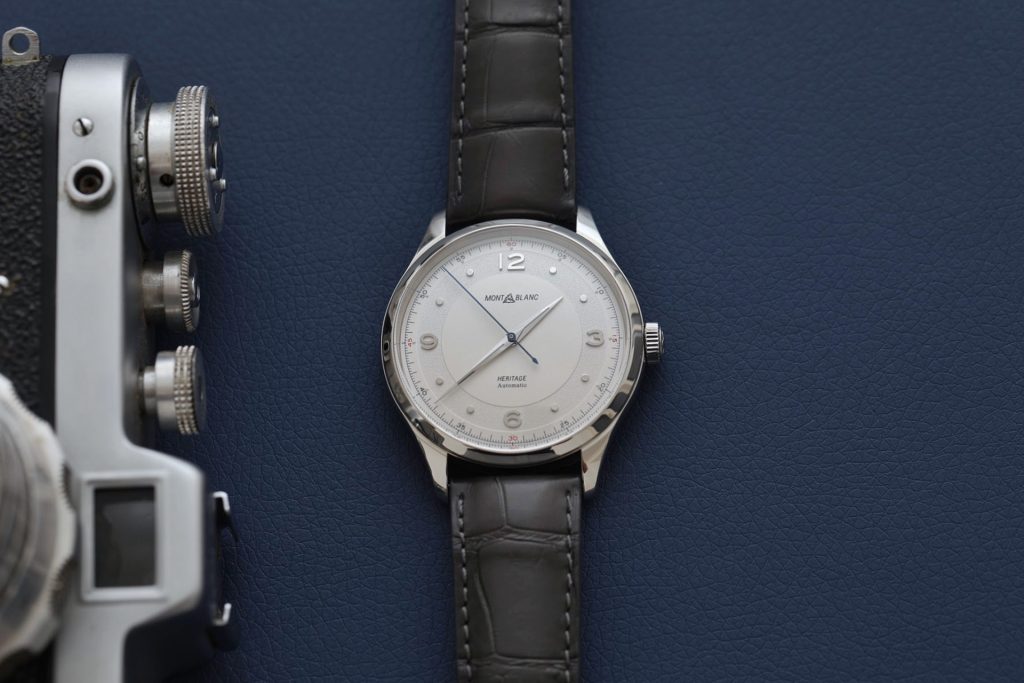
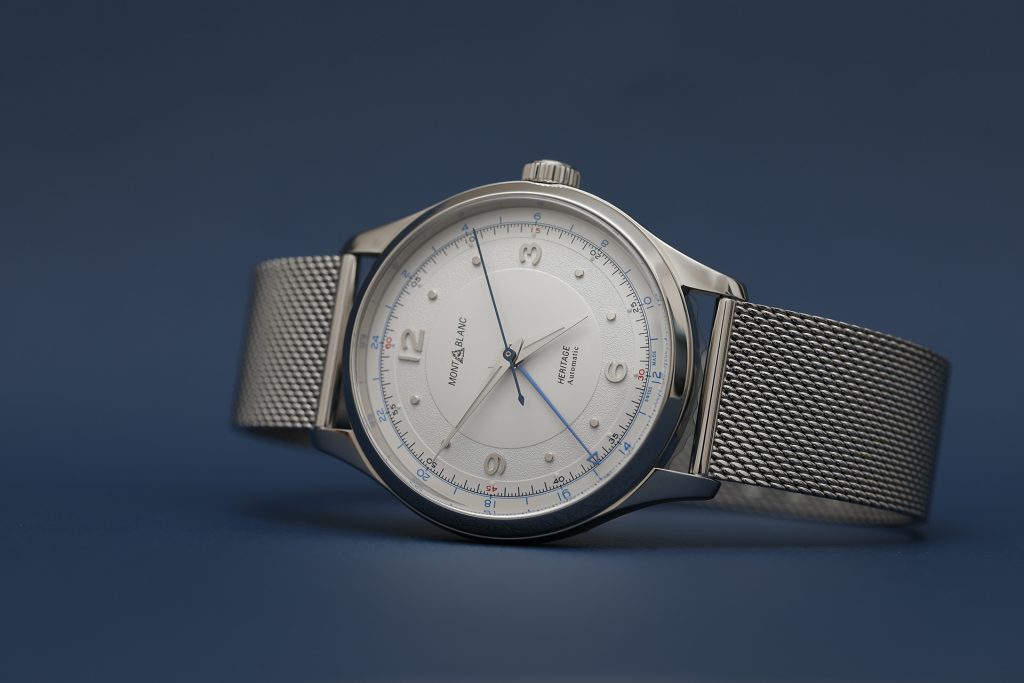
Montblanc Heritage Automatic in steel (left)
Montblanc Heritage GMT
with Milanese bracelet (right)
